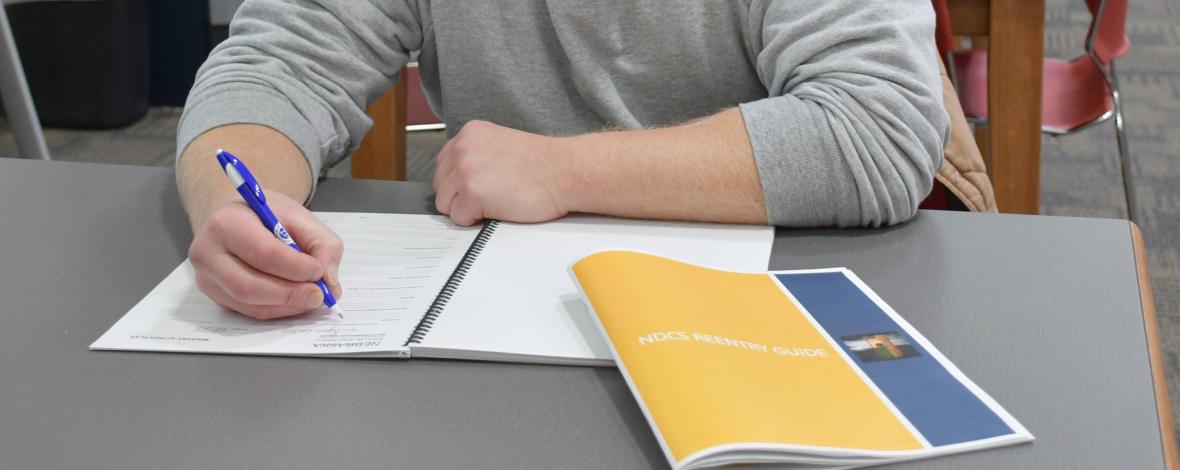Reentry resources have powerful impact on those releasing from NDCS
Reentry resources have powerful impact on those releasing from NDCS
FOR IMMEDIATE RELEASE (19-68)
CONTACT Laura Strimple, Chief of Staff
OFFICE 402-479-5713 | laura.strimple@nebraska.gov
Reentry resources have powerful impact on those releasing from NDCS
November 6, 2019 (Lincoln, Neb.) Two reentry resources created by the Nebraska Department of Correctional Services (NDCS) are proving to have a powerful impact on men and women who are getting ready to return to society.
“It has been a year since the Reentry Workbook was published. The accompanying Reentry Guide was released a few months later. Both publications have exceeded our expectations in terms of how they have been received,” remarked NDCS Director Scott R. Frakes.
To date, more than 11,000 workbooks and guides have been distributed to individuals incarcerated in NDCS. “The Reentry Guide provides an overview of nearly every program, class or club available throughout the agency,” explained Tony Britten, reentry program manager. “The Reentry Workbook provides tangible resources and steps people can take that will allow them to exit with a realistic plan for success.”
Individuals receive copies of the workbook and guide as soon as they arrive at NDCS. Ryan Leiting is completing his sentence at the Community Corrections Center-Lincoln (CCC-L). He said receiving those resources provided him direction and a sense of hope about what he could do after prison. “Each workbook has a plan in the back. If a person wants a better life, this book gives them a direction and lets them see what a healthy plan versus an unhealthy plan looks like.”
Reentry Administrator Grace Sankey-Berman oversaw the creation and publication of both the workbook and the guide. She said inspirational stories and practical exercises help people to visualize what is possible, when they do the work. “Those who use the Reentry Workbook are more actively involved in their reentry planning and have a more thought out plan that addresses their needs.”
“The more engaged people are in planning and directing their own futures, the more likely they will be able to succeed on the outside, and less likely to return to the old patterns of behavior that landed them in prison in the first place,” added Director Frakes. “That is why it is so important that reentry begin at intake.”
Daniel Virgil is also at CCC-L. He said utilizing the workbook helped him to identify those things he would need to have ready upon release, like housing. “I looked through all of the housing options. I filled out my own budget sheet, which helped me a lot. There were also job interviewing tips in the book and suggestions on how to tell an interviewer about my past criminal history.”
The workbook also includes chapters on addiction recovery, education, transportation, parole and post-release supervision. To increase access, the Reentry Workbook and the Reentry Guide are made available on secure tablets approved for use by inmates and through facility libraries.
“On average, 2,500 individuals enter and leave NDCS annually. The guidance provided by our reentry specialists cannot be understated when it comes to getting people prepared for release. These books are another tool that makes that interaction more productive and more meaningful,” said Director Frakes.
“When I got to the Work Ethic Camp (WEC), I already had a game plan of what I wanted to do while I was there, because the Reentry Workbook told me what I could expect,” noted Virgil.
“Reentry gives us hope for the future,” added Leiting. “These guides and workbooks give us that opportunity.”
###



